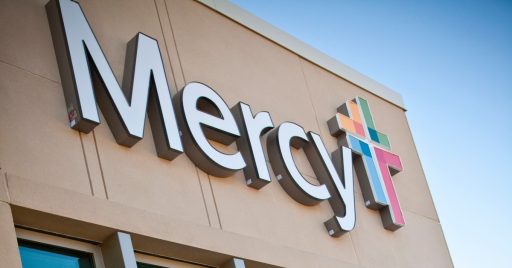Background
Enterprise Master Patient Index (EMPI) maintenance and data management has been a persevering challenge for healthcare providers. While research shows that patient record duplication tends to occur at the point of registration, expanding provider networks and network-wide EHR instance consolidation pose a need for Master Data Management to identify individuals across organizational or departmental data sets.
With far-reaching implications ranging from patient privacy and safety to inefficient claims management and surprising expenditures in IT infrastructure and HIM staffing, the deduplication and merging of these medical records is vital. While an inefficient EMPI strategy already compromises an organization’s significant investment in an EHR, postponing such efforts has a compounding negative effect – a mathematical and administrative nightmare.
The longer you wait, the higher your risk of potentially severe operational dysfunction.
Client Profile
Mercy Health, named one of the top five large U.S. health systems in 2019 by the IBM Watson Health 15 Top Health Systems study. It operates more than 40 hospitals and 900 physician practices across a diverse network spanning Arkansas, Kansas, Missouri, and Oklahoma. Established in 1986, this nonprofit organization serves millions of patients annually.
Mercy’s extensive network, including 40,000+ co-workers and more than 2,000+ physicians contribute significantly to its regional impact and national recognition, including multiple awards for quality and safety.
As the 6th largest Catholic Healthcare System in the US, the company operates with $11.6 billion in revenue and delivers more than $134 million in Traditional Charity Care each year. In addition, the organization provides $305 million in unreimbursed medicaid with another $48 million in other community benefits each year
Not only did Mercy’s project requirements fit SaaM’s specific industry specialization and expertise, but we were attracted to our alignment in community commitment and company values.
$11.6B
Operating Revenue
6th
Largest Catholic Healthcare System
$136M
Traditional Charity Care

The Challenge
SaaM and its Consultant Network were selected to complete more than 21,000 hours of work spanning two projects. SaaM partnered with Mercy Health to assist with an Master Patient Index (MPI) duplicate clean up effort.
After an affiliation agreement with St. Anthony’s Medical Center and subsequent EHR merger, the Health Information Management (HIM) team was faced with an excessive amount of potential duplicate records due to the vicinity of its appending medical center.
Duplicate analysis was required to deliver patient-matching assessments for more than 100,000 duplicate records.
Despite built-in patient matching management within Epic, Mercy’s HIM team determined that a level of dedicated manual investigation was necessary to accurately and confidently address the queue of duplicate patient reports flagged by its EHR.
While automation works wonders when done right, situations will always arise where clinical data management requires an irreplaceable human touch.
Initial Options
Internal staffing would have proven too burdensome, and upskilling and cross-disciplinary strategies would run the risk of costly overtime pay and staff burnout. Considering the size and scope of its MPI Data Management needs and the nature of handling personal health information (PHI), Mercy requested the delivery of an on-site staff augmentation team of data stewards at its St. Louis hospital location.
The request required large-scale coordination to mobilize a team of EHR experts for onboarding and project initiation while interfacing directly with Mercy’s IT staff in St. Louis. With many variables, SaaM considered on-site requisites including the number of resources, on-site space and equipment, and most importantly – identifying a reasonable total project cost. After running the numbers, our stakeholders understood this option was not economically feasible.
Project One
Project Two
The Solution
A 100% HIPAA-Compliant Work Environment was established for both projects, and coordinated directly between our internal team and Mercy’s Project Lead and IT Department.
After deliberation, we proposed a hybrid work environment – the management of a remote staff operating from a HIPAA-compliant office located in Nashville. While saving on overall project cost, we aimed also to alleviate the burden of additional workers coexisting on-site during a busy transition.
This creative workforce solution enabled self-management by our internal team who worked closely with Mercy’s HIM & Epic Implementation Director, and respective HIM and IT departments. We could also fast-track onboarding and train our W2 employees in much less time, expediting project initiation.
SaaM also delivered longer and more flexible hours of work, extending traditional business hours to maximize productivity.
The management team then coordinated both with Mercy’s HIM Director to standardize a process of data analysis and remediation delivery. Daily spot checks and weekly audit reports were performed to ensure data integrity as well as establishing strong channels of consistent communication required for organizational engagement.
Hardware and software requirements were managed in-house, and our internal team worked with respective IT Departments to ensure a 100% HIPAA-Compliant work environment.

ON MASTER PATIENT INDEX SERVICES
“We were incredibly impressed with the work SaaM provided. We had an extremely tight timeline.
They willingly worked with our IT team to meet our security requirements. The SaaM team was very detail-oriented, and cared about the work they were doing. We were able to complete the project on time and on budget. We couldn’t be happier with the outcome!”
Director, HIM & Epic Implementation
Mercy Health
The Results
By collaborating with Mercy’s IT infrastructure teams, we were able to deliver a HIPAA-compliant remote office to deliver data integrity analysis in much less time than a traditional on-site staff augmentation project. Stringent protocols were established, along with data governance rules to ensure proper data handling. Patient data workbooks were not downloadable, transferable and never left the workspace. Additionally, Mercy’s IT team had remote access and ability to encrypt any potentially compromised computer in the hypothetical case of breach.
This workforce solution was considerably cheaper than the original plan and the project goal preceded deadline. Our team was able to more directly manage performance, deliver both flexible and extended office hours to expedite project completion; and daily internal audits were performed on top of weekly audits executed by Mercy’s HIM team.
The Follow Up
After a successful first project, Mercy Health returned to us with a need for continued data integrity analysis for more than 160,000 patient records. While task requirements remained relatively unchanged, we proposed a fully-remote workforce model. This would provide a greater reach into SaaM’s Network, leveraging resources from all four continental time zones from which our data analysts perform work.
With a proof of concept established, this model rendered even higher cost savings to our client. Additionally, training and onboarding after an initial orientation with Mercy’s HIM team at project kickoff was facilitated by our internal project management team.
While task requirements remained relatively unchanged, we proposed a fully-remote workforce model. This would provide a greater reach into SaaM’s Network, leveraging resources from all four continental time zones from which our data analysts could work.
Furthermore, analysis and knowledge discovery of patterns in potential duplicate data sets from our previous work with Mercy led our team to develop a holistic approach to the Epic-generated patient matching reporting. By identifying and flagging duplicates based on the level of required manual investigation, we were able to spend more time on difficult remediation to allow for more investigation. Likewise, we were able to expedite remediation of flagged duplicates that were highly likely to be confirmed matching or non-matching patients. Both projects achieved goal delivery within roughly five months of work.
By employing a fully-remote workforce solution, systematically approaching our datasets, and leveraging the full geographic power of the SaaM Consultant Network; SaaM achieved a 60% production increase – from 100,000 records in Project 1 to 160,000 records in Project 2 – in approximately the same amount of time.

